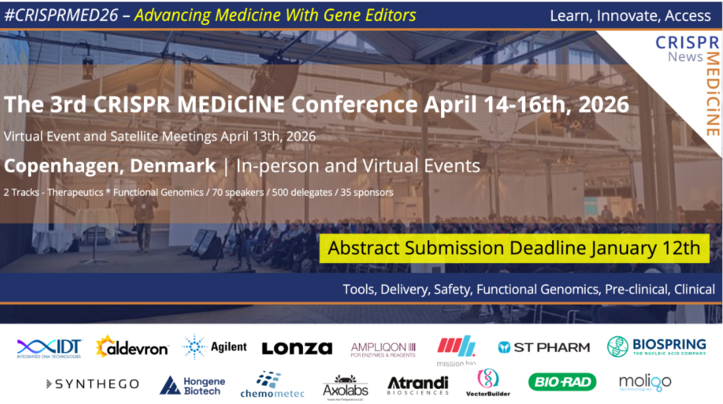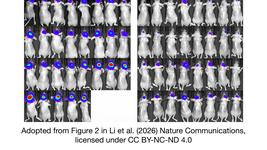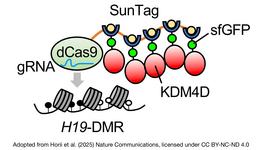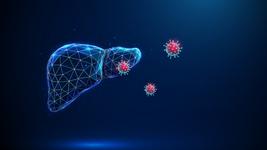CMN Weekly (5 September 2025) - Your Weekly CRISPR Medicine News
CMN Intelligence - The World’s Most Comprehensive Intelligence Platform for CRISPR-Genomic Medicine and Gene-Editing Clinical Development
Providing market intelligence, data infrastructure, analytics, and reporting services for the global gene-editing sector. Read more...
Top picks
In an article published in PNAS, researchers at Northwestern University report a novel CRISPR delivery system, CRISPR lipid nanoparticle-spherical nucleic acids (LNP-SNAs), which incorporates LNPs surrounded by a dense DNA shell that enhances cellular targeting and uptake. Compared to standard LNPs, LNP-SNAs showed 2-3-fold higher cellular uptake, reduced cytotoxicity, and superior gene-editing performance across multiple cell lines. The system achieved insertion-deletion mutations 2-3 times more frequently and enabled homology-directed repair at 21% efficiency versus 8% for conventional LNPs, highlighting its potential as a versatile platform for CRISPR and gene therapies.
Research
- To address bottlenecks in cell- and tissue-specific delivery and to avoid accumulation of LNPs, a team of scientists developed peptide ionizable lipids that enable organ-selective mRNA delivery. By incorporating artificial and natural amino acids with functional molecules, they created nanoparticles capable of targeting specific tissues including lungs, liver, spleen, thymus and bone. Their liver-targeting formulations showed comparable efficacy and safety to FDA-approved versions and successfully delivered mRNA and prime-editing guide RNA for gene editing in liver and lung tissues. Their findings were published this week in Nature Materials.
- In another article published in Nature Materials this week, another team of researchers seeking to improve extrahepatic organ-selective mRNA delivery developed a peptide-encoded organ-selective targeting (POST) method that utilises specific amino acid sequences to modify LNP surfaces for precise delivery following systemic administration. The technique works by forming distinct protein coronas around peptide-modified LNPs through optimised binding interactions between particular peptide sequences and plasma proteins. Molecular dynamics simulations and experimental validation revealed that this modular platform can transport various ribonucleic acids and gene-editing tools to different extrahepatic organs, expanding the range and adaptability of organ-selective delivery beyond existing hepatic-focused approaches.
- In an article published in Nucleic Acids Research, a team of researchers at various institutes in Netherlands and Sweden report the discovery, made through a loss-of-function genetic screen, that a TGF-β-induced long non-coding RNA (lncRNA) called LIMD1-AS1 enhances the SMAD3 transcriptional response and cancer cell plasticity. LIMD1-AS1 stimulates the complex formation between intracellular TGF-β effector SMAD3 with transcriptional co-activator p300 by directly interacting with both these factors. The team suggests that targeting LIMD1-AS1 may present a promising therapeutic strategy to restrain TGF-β-induced EMT and breast cancer progression. Read the full article here.
- In an article published in Cancer Immunology Research, researchers in China used CRISPR screens in primary macrophages to identify how tumour-associated macrophages (TAMs) develop their diverse functional phenotypes. The study found that tumour-derived factors including lactic acid, PGE2, and GM-CSF work together synergistically and antagonistically to drive distinct TAM polarisation states that are conserved across human cancers. Mechanistically, lactic acid and PGE2 collaborate to activate angiogenic gene programmes while suppressing GM-CSF-induced MHC-II expression through chromatin-level regulation, creating spatially distinct populations of proangiogenic TAMs and MHC-II+ TAMs within different tumour niches. The study also demonstrated that reprogramming TAMs to an interferon-responsive state enhances CD8+ T cell infiltration via specific receptor-ligand interactions, revealing a conserved TAM polarisation mechanism and potential therapeutic targets for cancer immunotherapy.
Industry
- iECURE presented initial trial data for ECUR-506, its AAV-mediated gene insertion therapy for neonatal onset ornithine transcarbamylase deficiency, at the 6th International Symposium on Urea Cycle Disorders and 15th International Congress of Inborn Errors of Metabolism, both held in Kyoto earlier this week. According to a press release, the first-in-human study's initial participant achieved complete clinical response with no hyperammonemic events through 24 weeks. Data from four enrolled infant patients demonstrated sustained reductions in urinary nitrogen and plasma glutamine levels, with the first treated patient maintaining normal ammonia levels and requiring minimal nitrogen scavenger therapy. ECUR-506 is designed to deliver a functional OTC transgene to hepatocytes, representing a potential one-time treatment for this rare but life-threatening urea cycle disorder affecting newborn males. See the poster presentation here.
- Editas Medicine has nominated EDIT-401 as its lead in vivo development candidate. EDIT-401 is being developed as a one-time therapy designed to treat hyperlipidaemia by directly editing the LDLR gene to increase LDLR protein expression and reduce LDL-C levels. According to the official press release, the approach has demonstrated a favourable preclinical profile in efficacy data and tolerability and supports the potential of EDIT-401 to deliver meaningful clinical outcomes for patients underserved by current lipid-lowering therapies.
Reviews
- A clinical roadmap for base and prime editing. Base- and prime-editing technologies broaden the possibilities for therapeutic genome editing by allowing targeted base conversions and small indels without the need for homology-directed, cell cycle-specific DNA repair. However, translating these technologies presents significant challenges in design, manufacturing, delivery and regulatory assessment. In this review article, a team at University of Southern California and Children’s Hospital of Los Angeles outlines the ways in which ongoing clinical trials of CRISPR-based therapies offer a roadmap for the translation of base- and prime-editing therapies, from manufacturing and quality control to clinical trial design and regulatory assessment.
- Advances in large-scale DNA engineering with the CRISPR system. This review provides an overview of the latest developments in CRISPR-based gene-insertion technologies and discusses their potential future applications.
- Cellular Immunogenicity Assessments in CAR-T Cell Therapies: Current Insights and Future Directions. This commentary overviews cellular immunogenicity assessment strategies for CAR-T cell therapies, covering risk assessment, sample collection protocols, and peptide design for detecting immune responses in treated patients. It presents practical experience from ongoing CAR-T studies, including challenges and recommendations, while discussing the clinical relevance of cellular immunogenicity and its relationship to antibody responses.
- CRISPR-mediated modulation of EGFR signaling in lung cancer. This review examines the application of CRISPR/Cas9 gene-editing technology for treating lung cancer by targeting EGFR signalling. While lung cancer remains the leading cause of cancer death, current treatments using tyrosine kinase inhibitors and monoclonal antibodies to block EGFR signalling face challenges from intrinsic and acquired resistance. The authors discuss how CRISPR/Cas9 technology offers new therapeutic opportunities by enabling direct genome editing to counteract activating EGFR mutations in lung cancer, potentially overcoming resistance mechanisms that limit conventional EGFR-targeted therapies.
- Topology-Engineered Guide RNAs for Programmable Control of CRISPR/Cas Activity. This review summarises the current strategies, benefits, and challenges associated with topology-engineered guide RNAs (TE-gRNAs) and discusses future directions for enhancing their performance and utility in complex genome-editing applications.
- Status quo and future developments in the diagnosis and treatment of hereditary angioedema. This review examines hereditary angioedema (HAE), a rare disease causing potentially life-threatening swelling due to mutations in SERPING1 or other genes affecting C1 inhibitor function and bradykinin production. HAE is often underdiagnosed, with years between symptom onset and diagnosis, significantly impacting patients' quality of life and work capacity. Treatment includes on-demand therapy for acute attacks, short-term prophylaxis, and long-term prophylaxis with four first-line options that effectively prevent attacks. Emerging therapies, including CRISPR/Cas9-based gene therapy, promise more individualized treatment approaches for HAE patients.
Conferences
ARRIGE Annual Meeting - Access and Affordability of Gene Therapies : Challenges for Genome Editing. This two half-day ARRIGE annual meeting in Strasbourg, France (and online) will explore the ethical, social, and policy issues surrounding access to and affordability of emerging gene therapies developed through genome-editing technologies. The event will bring together researchers, clinicians, policy makers, regulators, biotech entrepreneurs, pharma and patient advocates to discuss equity, innovation, and global health implications. Find the preliminary programme and registration details here.
News from CRISPR Medicine News
- Spanish researchers have developed a CRISPR-CAS High Fidelity system that specifically targets G12C and G12D mutations in non-small cell lung cancer. The approach demonstrates superior therapeutic efficacy compared to existing treatments whilst avoiding off-target effects on wild-type KRAS. Read more about this study in yesterdays' CMN highlight here.
To get more CRISPR Medicine News delivered to your inbox, sign up to the free weekly CMN Newsletter here.
“The European Genomic Medicine Consortium is quietly gathering under the CMN umbrella. Exploring the frontier of gene editing for therapeutic precision - this network is not public yet, but it’s real. Watch the signals, track the sequences. Only those who search will know.”R
Tags
ArticleNewsCMN WeeklyEditas Medicine, Inc.iECUREWUGEN Inc.YolTech Therapeutics
CLINICAL TRIALS
Sponsors:
Base Therapeutics (Shanghai) Co., Ltd.
Sponsors:
Base Therapeutics (Shanghai) Co., Ltd.







